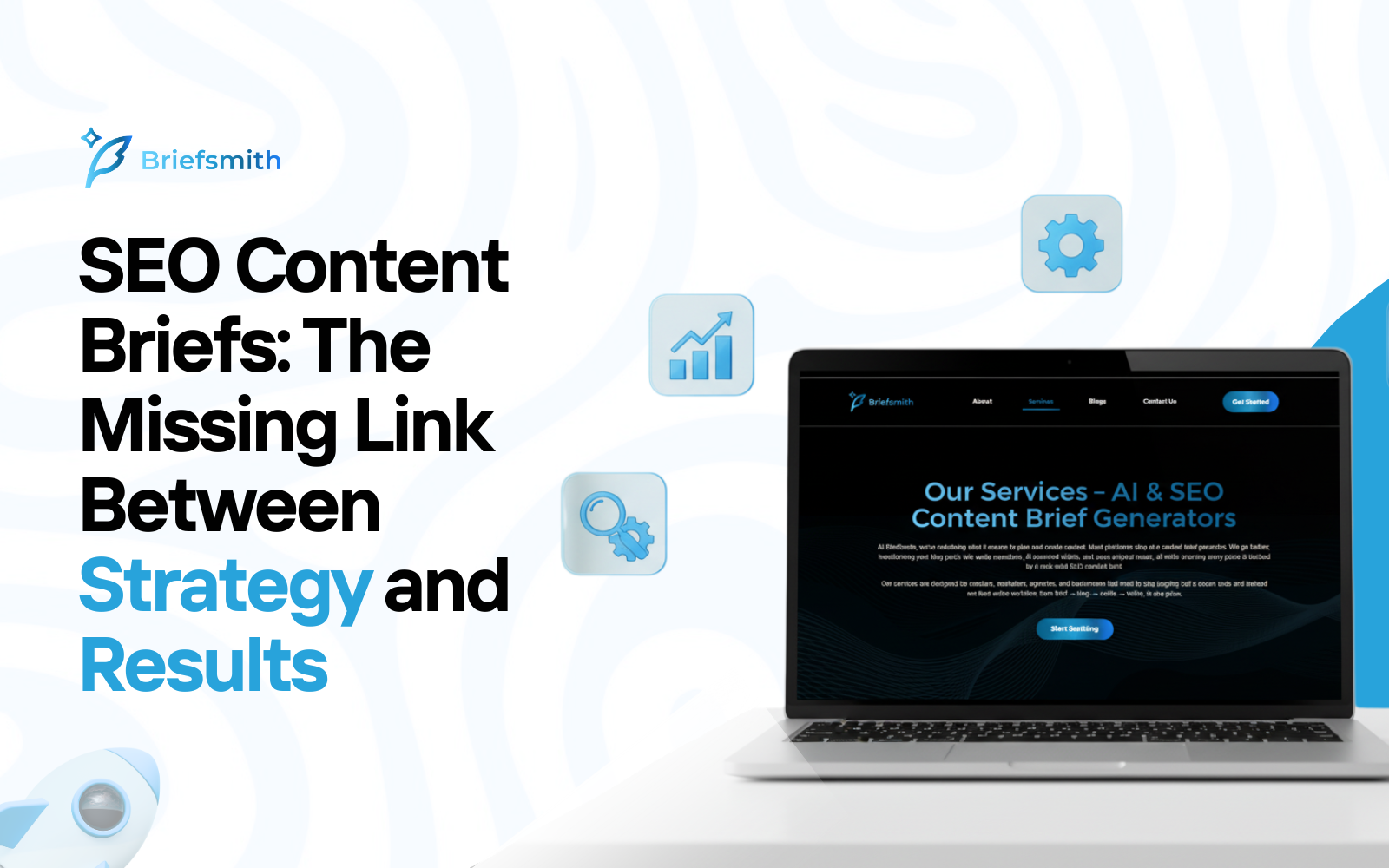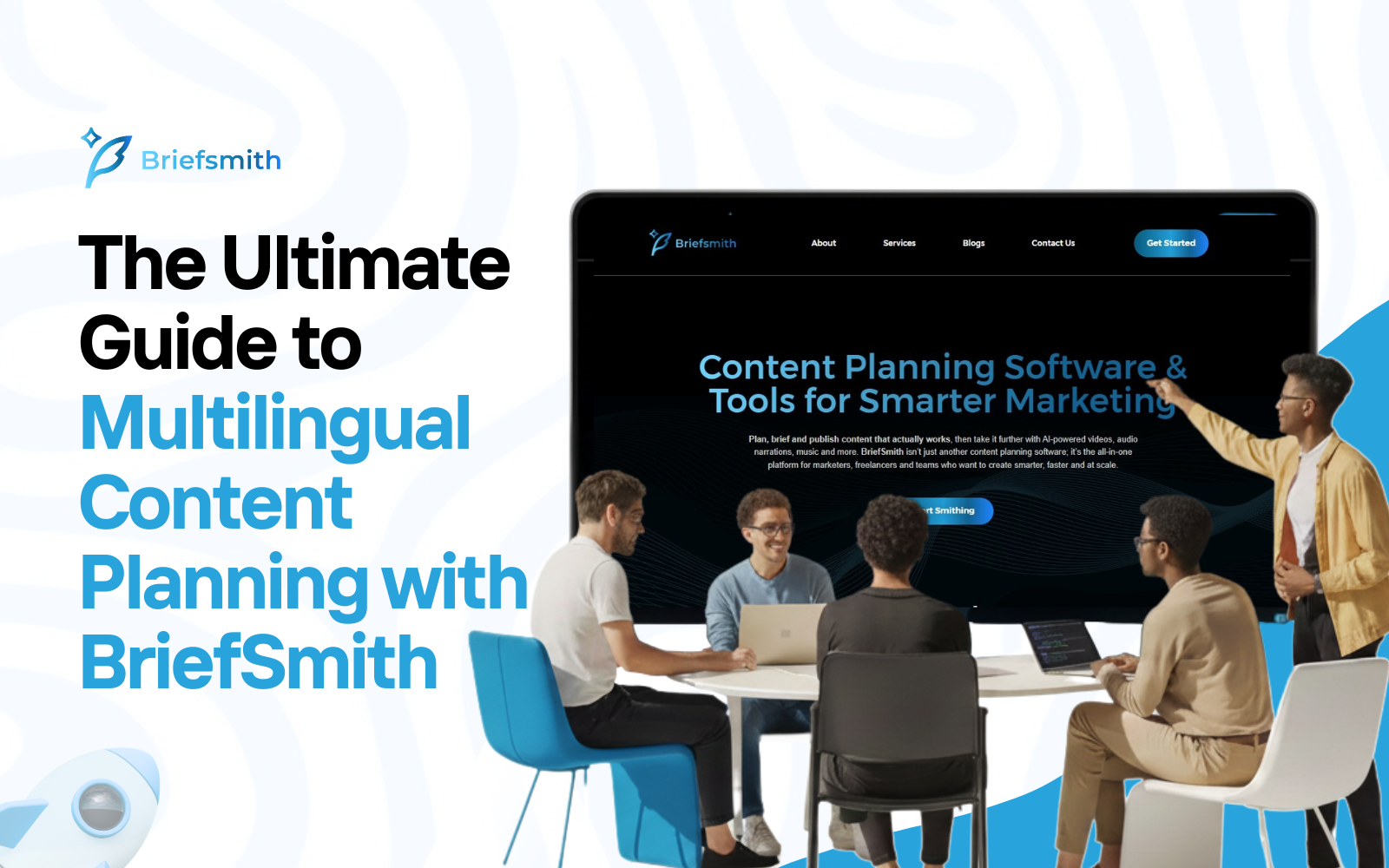SEO Content Briefs: The Missing Link Between Strategy and Results

Why Content Falls Flat Without a Brief
You can have the best writers in the world, a stack of keyword research and a calendar full of ideas, yet still end up with content that doesn’t perform.
Why?
Because without a proper SEO content brief, you’re relying on guesswork. Writers may:
- Miss the target keywords or use them unnaturally
- Skip important subtopics that competitors cover
- Write in a style that doesn’t match your audience
- Produce content that doesn’t align with your business goals
The result? Content that exists, but doesn’t rank, or worse, doesn’t resonate. An SEO content brief is the bridge between strategy and execution.
What Is an SEO Content Brief?
An SEO content brief is a structured document that guides a writer in creating a piece of content designed to rank on search engines and appeal to readers.
At a minimum, a strong SEO content brief includes:
- Primary keyword(s) to target
- Secondary and supporting keywords
- Search intent (what the reader really wants)
- Outline of headings and subtopics
- Tone and style guidelines
- Internal and external link suggestions
- Call-to-action to tie the piece to your goals
Think of it as a GPS for writers. Without it, they may still get somewhere, but probably not where you need them to be.
(Want to dive deeper into how briefs are created? Check out AI Content Brief Generators: Do They Really Save You Time?
Why SEO Briefs Matter More Than Ever in 2025
The content marketing landscape in 2025 is saturated. Everyone is publishing blogs, videos and newsletters. To stand out, your content can’t just exist, it has to be optimized, structured and strategically designed.
Here’s why briefs matter more than ever:
1. They Align Writers With Strategy
Writers aren’t mind-readers. A good brief translates marketing strategy into actionable instructions.
2. They Ensure SEO Isn’t an Afterthought
Too often, SEO gets bolted on after a draft is written. Briefs bake it into the process from the start.
3. They Speed Up Production
When writers have clear direction, they spend less time researching and more time writing.
4. They Improve Consistency
Whether you have one writer or ten, briefs ensure every piece meets the same standards.
5. They Boost ROI
Content is expensive to produce. Briefs make sure that investment has the best chance of paying off.
Anatomy of a Great SEO Content Brief
Let’s break down what separates an average brief from a great one.
Primary & Secondary Keywords
Don’t just hand writers a single keyword. Provide the full cluster: main keyword + supporting terms + semantic phrases.
Search Intent
Explain what the reader really wants when they search. Are they looking to learn, compare, or buy?
Content Structure
Offer a suggested outline with H2s and H3s. This helps writers cover the right subtopics and keeps content scannable.
Tone & Audience Notes
Is the content professional and authoritative? Or casual and conversational? Context matters.
Links & References
Suggest internal links (to your own resources) and credible external references. This strengthens SEO and builds trust.
Call-to-Action
Every piece of content should have a purpose. Tell the writer what you want readers to do next, sign up, download, book a demo.
The Old Way vs. The New Way
Traditionally, marketers built briefs manually. It looked something like this:
- Run keyword research
- Analyze competitor articles
- Pull SERP data
- Build an outline by hand
- Write audience and tone notes
That process could easily take 2–3 hours per brief. Multiply that by 20 pieces of content and you’ve lost an entire workweek.
The new way? AI-powered tools like BriefSmith automate much of the research and structuring, producing a solid draft brief in minutes.
We covered the full evolution of this shift in Content Marketing in 2025: How AI Brief Generators Are Changing the Game
How BriefSmith Makes SEO Briefs Simple
BriefSmith takes the guesswork (and grunt work) out of building briefs. Here’s how:
- Keyword Integration: Pulls in target keywords and suggests secondary terms.
- Competitor Analysis: Identifies what top-ranking articles cover and what they miss.
- Structured Outlines: Generates an H2/H3 outline that’s SEO-friendly and reader-friendly.
- Custom Notes: Lets you add brand-specific guidelines, tone and CTAs.
- One-Click Planning: Connects briefs directly to your content calendar.
Instead of wasting hours assembling details, you start with a ready-to-use brief and refine from there.
Who Benefits From SEO Briefs?
The short answer: anyone creating content. But here’s how different groups benefit:
- Marketing Teams: Scale content without losing quality.
- Agencies: Deliver briefs to freelancers for consistency across multiple clients.
- Freelancers: Impress clients with professional, SEO-focused outlines.
- Small Businesses: Get the structure they need without hiring a strategist full-time.
Common Brief Mistakes to Avoid
Even with a template, briefs can go wrong. Watch out for these pitfalls:
- Keyword stuffing. Overloading a brief with keywords makes content robotic.
- Vague instructions. “Make it engaging” isn’t helpful. Be specific.
- Ignoring the reader. Optimizing for algorithms without considering humans won’t work.
- No CTA. Every piece needs a clear next step, or you’re leaving value on the table.
Final Thoughts
SEO content briefs aren’t busywork. They’re the missing link between content strategy and actual results.
A well-structured brief ensures your writers know what to do, why it matters and how to execute. Without them, you’re gambling valuable time and resources on content that might not perform.
The best part? You don’t have to spend hours building briefs manually. Tools like BriefSmith make it possible to generate high-quality SEO content briefs in minutes, so your team can focus on creating, not just planning.
Because in today’s crowded content landscape, strategy alone isn’t enough. Execution is everything. And execution starts with a brief.



